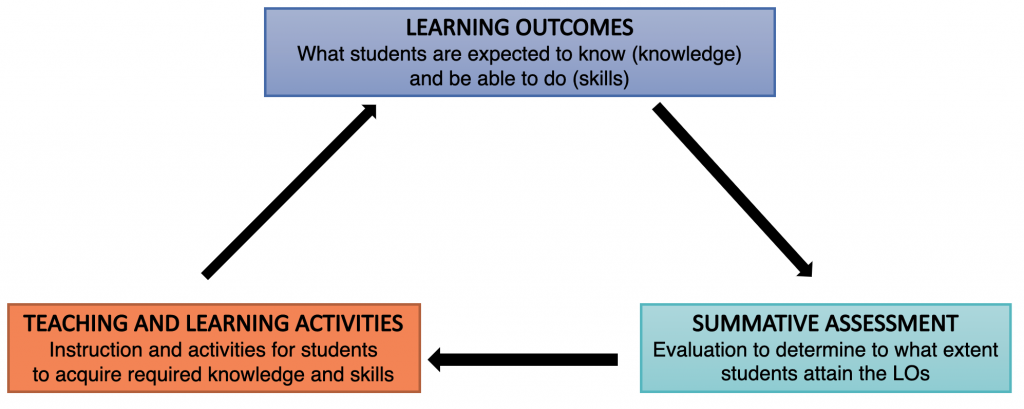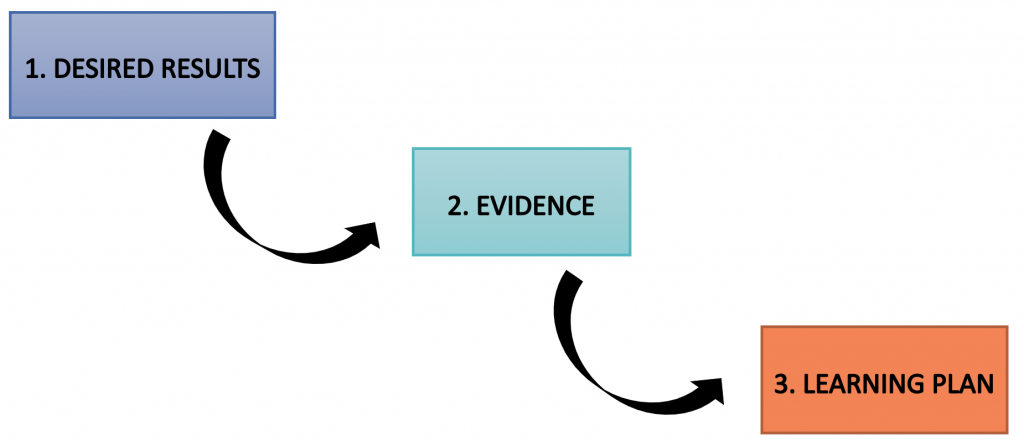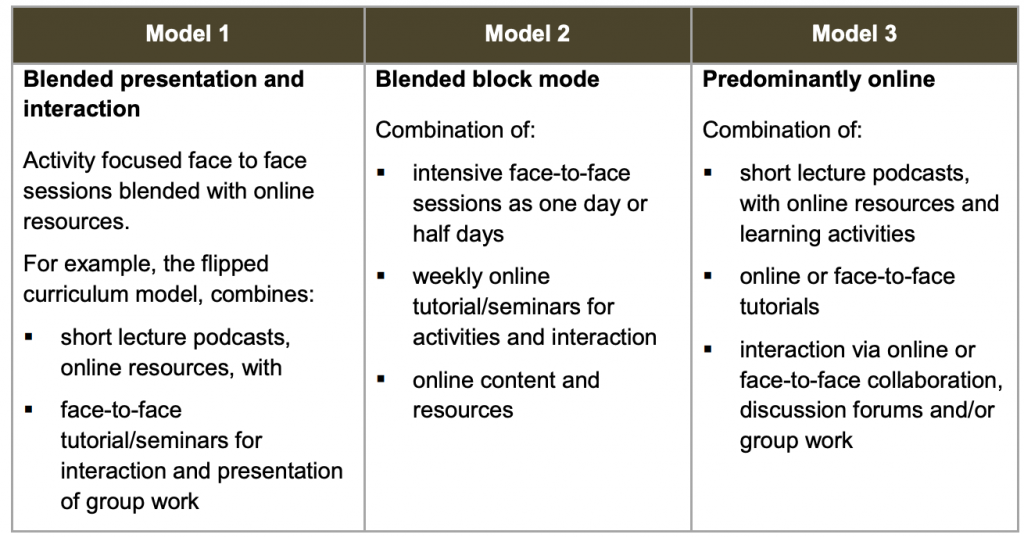EMPOWERING EDUCATORS AT
COPENHAGEN BUSINESS SCHOOL
COPENHAGEN BUSINESS SCHOOL
When planning your teaching and your course design, there are several ways to approach the process. Within the research of university pedagogy, some theoretical approaches have shown to be more efficient than others. We have collected the most widely used approaches and outlined their affordances, so you can begin modeling and designing your own course(s).
If you want to talk to a learning consultant about your course design, you can contact Teaching & Learning at tl@cbs.dk, or reach out to your local department consultant.
Constructive alignment
Constructive alignment refers to the design of a course or learning process, where the intended outcomes that students should learn and how they should demonstrate their learning is clearly stated before the teaching begins. The course outline is then designed to engage students in teaching and learning activities that improve their chances of achieving those outcomes, and assessment and exam formats are designed to enable clear judgments as to how well those outcomes have been attained.

The key assumption of the constructive alignment model is to align the learning outcomes of the course, the teaching and learning activities that students are expected to engage in during the course, and the exam or assessment of the course. When designing for learning that is aligned, you increase the intended learning potentials of the course materials, and the alignment will support students when training the skills, knowledge, or competencies needed to complete the course.
Resources
Aligning teaching for constructing learning,John Biggs (link)
An Elaboration of Constructive Alignment, Charles Sturt University (link)
Biggs, J. (2014). Constructive alignment in university teaching. HERDSA Review of Higher Education, 1, 5-22.
Tyler, R.W. (1949). Basic principles of curriculum and instruction. Chicago: University of Chicago Press.
Backwards design
Backwards design of course instruction is a way of determining the desired results of a course or section, the evidence that students should demonstrate, and the learning plan that supports these. This means that you build your course not around predetermined assignments and activities, as you may have done previously, but around the skills and knowledge you want your students to acquire during the course. The key component of the backwards course design is that you anchor the course development in the learning outcomes of the course and work backward from there.

Stage 1: Identifying the desired results
What do you expect students to know or be able to do at the end of the class, unit, or course?
Stage 2: Determining acceptable evidence
How will the students demonstrate they met the learning outcome?
Stage 3: Plan learning experiences and instruction
How will students gain the knowledge and develop the skills necessary to meet the learning outcome?
When you move from the end of the course (the desired results), towards accepting the acceptable evidence that students demonstrate, you will be able to design a much more enriched and meaningful learning experience for students.
Resources
Understanding by Designing, Vanderbilt University (link)
Backwards Design, University of Colorado (link)>
Wiggins, G. P., & McTighe, J. (2005). Understanding by design. Alexandria, VA: Association for Supervision & Curriculum Development.
Blended learning design
Blended learning refers to a course design that integrates face-to-face teaching on campus and online, self-paced learning elements, such as videos, assignments, readings, quizzes, etc. There is no one-size-fits-all model for blended learning because different courses call for different designs. Some types of content are usually better taught online and at home, e.g. conveying specific and important information, and then spending time in class to discuss the content and actively engage with it (flipped classroom), while other types of content need conveying in class (with students involvement), and active participation at home. Read more about blended learning here.
Below are three different models of blended learning (mostly face to face, 50/50, and predominantly online) and what the design of these could look like:

(La Trobe University, Blended Learning toolkit)
Resources
The DADDIE model, Blending for Engagement (link)
The CAIeRO model, University of Northampton (link)
Linder, K. E. (2017). The Blended Course Design Workbook. Stylus Publishing: Virginia
Universal Design for learning
The Univeral Design for Learning Guidelines is a tool used in the implementation of Universal Design for Learning. These guidelines offer a set of specific suggestions that can be applied to any discipline or domain to ensure that all learners can access and participate in meaningful, challenging learning opportunities. UDL guides the design of learning experiences to meet the needs and behaviors of all learners. When you use UDL, you assume that barriers towards learning are in the design of the environment and not in the student.
The Universal Design for Learning guidelines spans over three learning dimensions: Engagement, Representation, and Action & Expression.
View the entire UDL matrix here, where the dimensions and guidelines are elaborated and exemplified.
Resources:
UDL Guidelines (link)
UDL Guidelines checklist, West Virginia’s Department of Education (link)
Universal Design for Learning, Teaching Excellence in Adult Literacy (TEAL) (link)